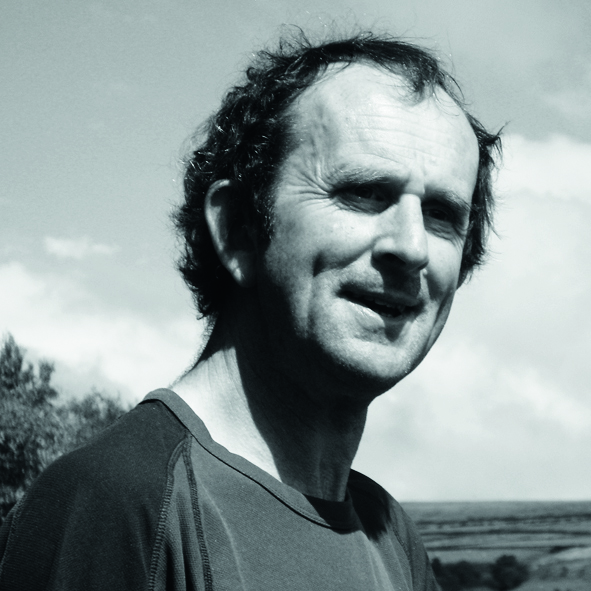Tourists often pass straight through Cheshire, crossing the flat plain across which the M6 and West Coast mainline both surge to a more endearing elsewhere. If the county makes an impression on them, it might only be to remark that the cows’ two-tone hides mirror the county’s half-timbered old manors, and recall that their milk is used to make a pale, crumbly cheese.
Yet there is much to love about Cheshire. Take time to roam one of England’s oldest counties and you will find heathery moors, hidden vales amid rippling hills, atmospheric meres, ancient woodlands, bustling waterways, majestic mansions and parklands, striking peaks, bold ridges, bucolic hamlets and lazy valleys, all laced with enticing paths and byways.
On crisp, snow-blue days, Cheshire’s countryside is peerless, while in inclement weather its ancient villages, enticing market towns and the historic city of Chester make fascinating alternatives.
Our guide explores the best things to do in Cheshire, including castles and stately homes to visit, best walks and wildlife highlights.
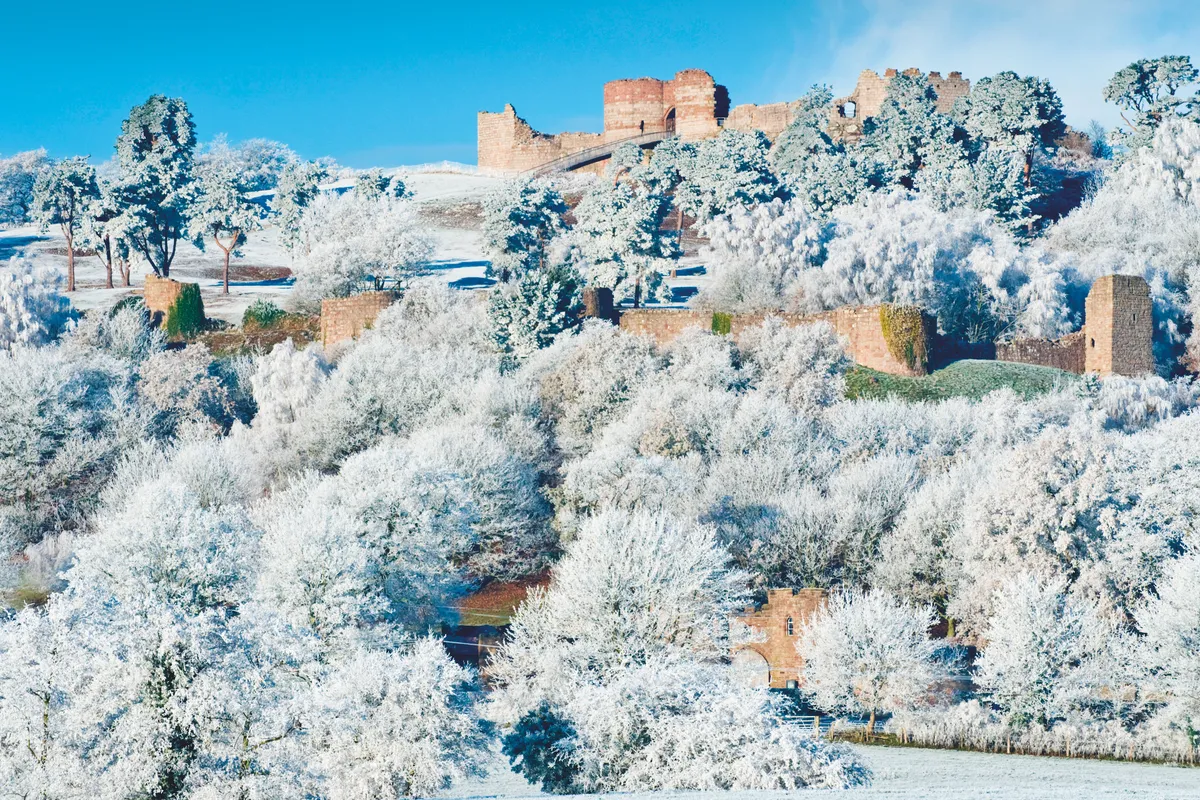
Where is Cheshire?
Cheshire is a county in England. It lies in the north-west of England and is borded by several other counties in England and Wales, including Merseyside, Greater Manchester, Derbyshire, Staffordshire, Shropshire, Flintshire and Wrexham County Borough.
Places to visit in Cheshire
Shining Tor
Cheshire’s hilly east is in the Peak District National Park, crowned by the county’s highest point – the gritstone eminence of Shining Tor, at 559m. Easily gained on firm paths from the Cat and Fiddle (the second-highest pub in England, at 520m), winter’s sharpest days reward with crystal-clear views of more than 50 miles to the Welsh Mountains and along the Pennines.
Shutlingsloe
A stiffer walking challenge awaits along lanes just to the west, where Shutlingsloe’s mighty steep-sided wedge of a 506m summit rises precipitously above the secluded Wildboarclough Valley.

Dane Valley
The area’s most beautiful, secret countryside is a step south again to the upper Dane Valley, on the boundary with Staffordshire. Here, old packhorse trails and miners’ ways meander between chasms, gorges, crags and moorland domes. Winter’s grip ices waterfalls, crispens hill paths and accentuates centuries-old sessile oakwoods – spellbinding seasonal splendour in a tumultuous landscape.

Lyme Park
Alternatively, look to the immense Lyme Park at Disley, spread over ridges, moorand woodlands cosseting a huge country mansion. Red deer browse the estate, while numerous paths and tracks make discovering the landscape a pleasure. An enjoyable approach is from Nelson Pit Visitor Centre at Higher Poynton, where routes from the snug Boar’s Head pub run along canal-sides and through woods to hilltop viewpoints. This is just one of many easy canal-based rambles on Cheshire’s extensive inland waterways network; they are relaxing, reliable destinations to choose when winter weather puts you off higher, more exposed locations.
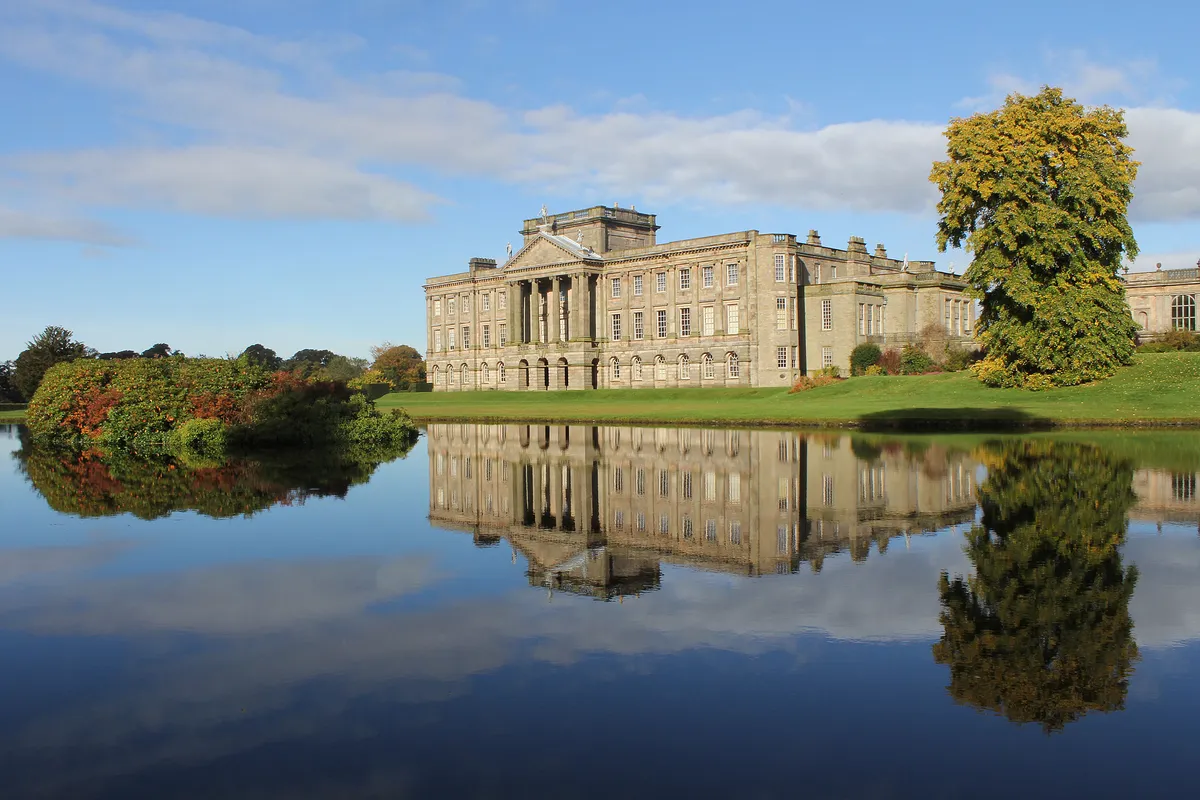
Wirral
In complete contrast, beyond Chester stretches the broad estuary of the River Dee and the Wirral coastline’s immense sea-marshes and reed beds. The RSPB manages much of this fascinating edgeland and its large reserves host a tantalising range of wildlife – marsh harriers, waders, egrets, bearded tits, wildfowl and peregrines overwinter here at ponds, pools and inlets. Marshland tracks thread this absorbing landscape from picturesque villages, such as Burton and Parkgate.
One place to home in on is Little Neston, where crumbling quays stretch out towards the long-gone shipping channel, and the tiny white-painted Harp Inn fronts serpentine creeks and lagoons beloved by generations of ornithologists. The views across the ephemeral Dee to the shapely hills of Flintshire are exquisite.
Blakemere Moss
Blakemere Moss was drained in 1815, reportedly by prisoners from the Napoleonic Wars, then rewatered in 1998. Now, Blakemere Moss fills its huge, shallow basin, dappled and bordered by countless skeletal, drowned pines; it’s a breathtaking, unexpected vista. In deepest midwinter the forest is a renowned dark sky location for stargazing the glittering Milky Way.
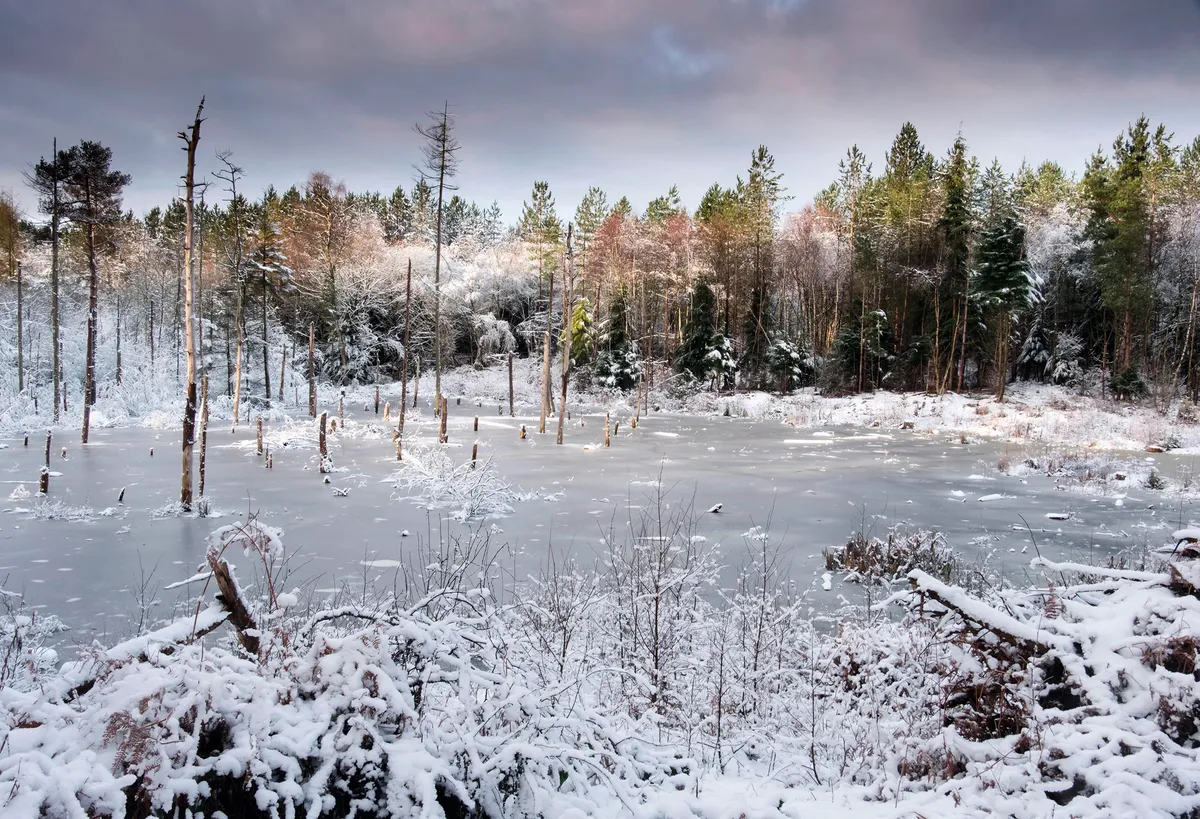
Alderley Edge
On chilly days, head to the bold sandstone escarpment at Alderley Edge. It’s a restful place to walk, incised with ancient copper-mine workings amid a filigree of easy paths and tracks through woods of Scots pine, oak and beech. There’s plenty of winter magic in the countryside between Alderley and Shining Tor, an area featured in Alan Garner’s classic children’s tale The Weirdstone of Brisingamen (1960).
Delamere Forest
In medieval times, the earls of Chester ensured that vast areas became their personal hunting domains. The Forest of Mara stretched endlessly south from the Mersey; vestiges survive as today’s Delamere Forest. Take the train to Delamere Station, at the heart of the Mara, when snow dusts the forest and you’ll experience a landscape more high Canada than rural Cheshire.
Delamere Forest is pocked by primeval meres and marshy hollows, a residue of the last Ice Age 12,000 years ago. A chill winter day catches them at their best, with ice-patterned surfaces, frosted reeds and pine cones glistening on overhanging firs.

Peckforton Hills
Further south lie the Peckforton Hills, where wooded crags and scarps erupt from the flatlands. Here are crumbling fortifications, such as Maiden Castle hillfort and Beeston Castle’s dramatic clifftop ruins. The well-waymarked Sandstone Trail and side-paths encourage exploration, where an astonishing grove of wizened sweet chestnut trees caps the thickly wooded Bulkeley Hill. An energetic leaf-cruncher walk from Burwardsley takes in these and the clifftop viewpoint of Raw Head, highest point on the Sandstone Trail, where it peeks above tree-shrouded clefts and bluffs, looking across to the distant giants of the snow-capped Berwyn Mountains.
Macclesfield Forest
Another Norman playground was Macclesfield Forest, where huntsmen once pursued deer and boar across upland and through deep forest. The hilly rump remains; old salters’ ways, farm byways and the Gritstone Trail slink between tops and vales, reservoirs, hamlets and moorland wastes. A few red deer still browse the steep deciduous woods, while spruce and fir stands provide a winter home to goshawks, goldcrests and crossbills – it’s a rewarding challenge to spot these beautiful birds.
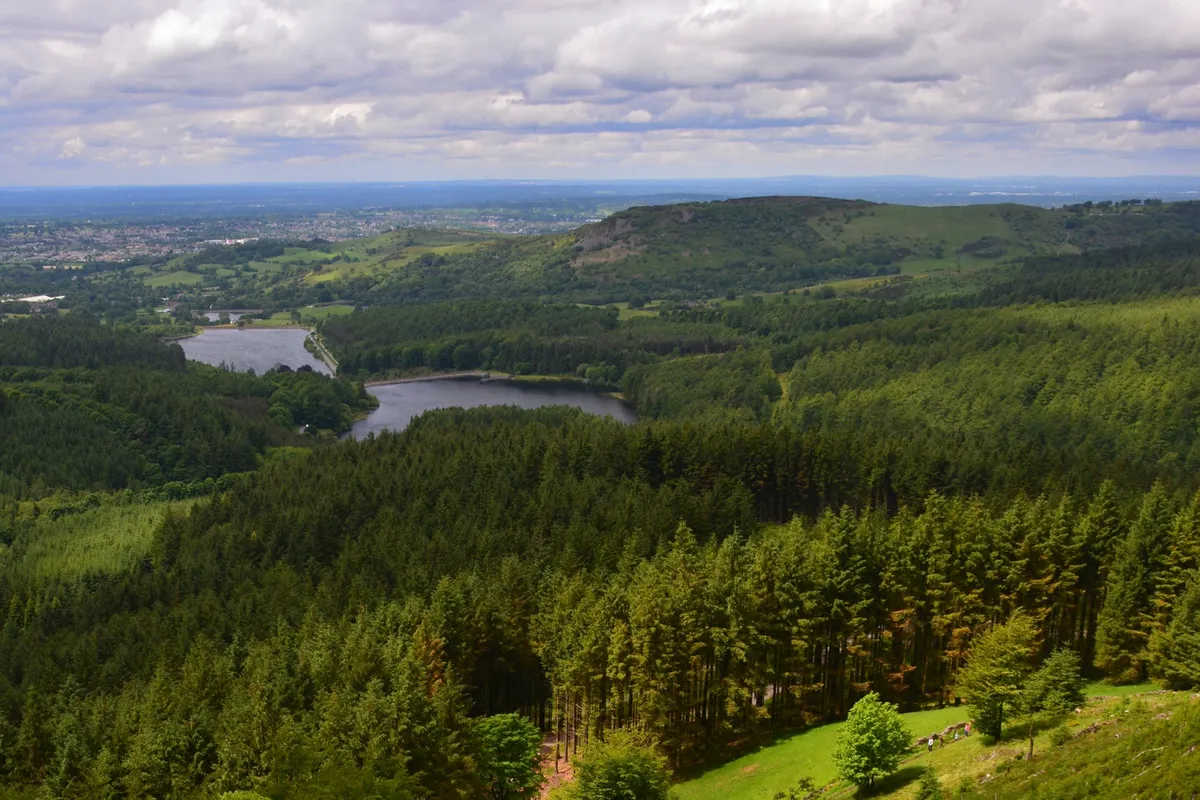
Rode Hall
Snowdrops emerge as a morale-boosting winter marvel. Rode Hall, by Scholar Green near Congleton, has enchanting snowdrop walks in February in sublime, Humphry Repton-designed landscaped parkland.
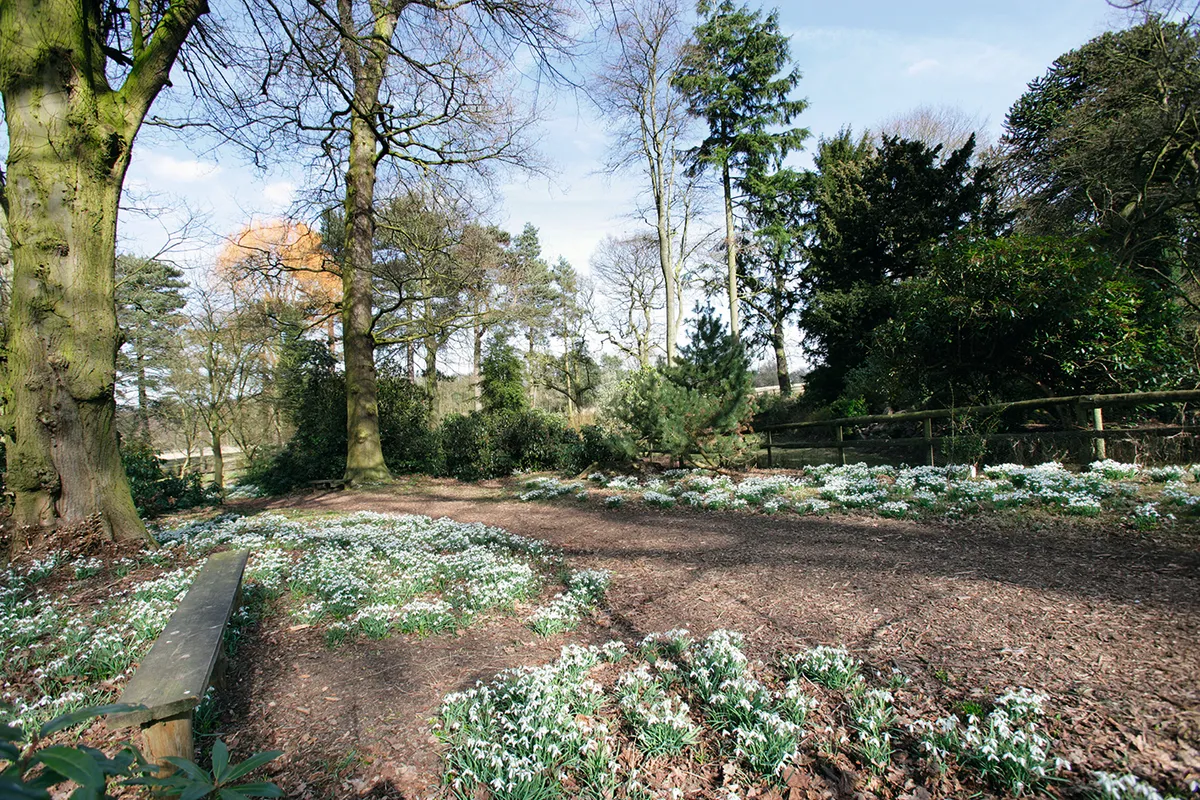
St Boniface Church, Bunbury
A breathtaking 14th-century village-centre sandstone gem, with superb alabaster and decorated tomb memorials, vestiges of medieval paintings and colourful decorated screen. The village watermill is nearby.
National Waterways Museum, Ellesmere Port
Discover how Britain’s waterways coped with wintry weather in times past. Superb exhibitions of canal history and ephemera, boats of all sizes and interactive units at England’s largest inland canal port, on Trent and Mersey Canal. Adults £9.75, child £6. canalrivertrust.org.uk
Macclesfield Silk Museum
Unravel the intriguing history of silk working in Macclesfield – weaving, design and printing. The adjacent Paradise Mill has working heritage looms and demonstrates manufacture from silk cocoon to wearable fabric. Entry is by donation; mill £9.50. macclesfieldmuseums.co.uk

Alsager Hall Farm Shop, Alsager
Cheshire and Staffordshire produce features here, with farm-reared lamb, locally grown vegetables, great cheeses, local bakes, beers and delicatessen specialities. hallfarmshopalsager.co.uk
Rose Farm Shop, Utkinton, Tarporley
Cheshire’s larder at your fingertips, including home-farm pork and beef, with local lamb alongside Cheshire varietal cheeses, home-cooked and cured meats, dairy products and drinks. rosefarmshop.co.uk
Best walks in Cheshire
There are lots of great walks in Cheshire. Here are a few to get you started.
Shutlingsloe
‘Cheshire’s Matterhorn’ (506m) soars above Macclesfield Forest. Well waymarked and maintained forest paths and tracks rise steadily from the car park at the side of Trentabank Reservoir to the moorland edge and the signed, paved path to Shutlingsloe. It’s a short, stiff climb to the summit; four miles return.
Old Pale
Walk to Delamere Forest’s highest point for great views. Start from the Forest Visitor Centre and head north-east below Go Ape, then west beside Blakemere, advancing on a woodland path to join the Sandstone Trail heading south. Diverge to the Old Pale summit, then follow good paths north back to the visitor centre; four miles.
Chester’s Walls
From Eastgate Bridge, walk north on the walls past Chester Cathedral. Leave right at Falconry Centre steps (Kaleyard) and join canal towpath, left, through a deep cutting, then past the Northgate Locks to old wharves near Telford’s Warehouse. Regain walls at The Water Tower to complete the anticlockwise circuit; two miles.

Cheshire's timber-framed buildings
Cheshire’s ‘magpie’ architecture is one of its calling cards. Numerous half-timbered black-and-white buildings occur at all scales and in all locations, from simple cottages to renowned mansions, now indelibly part of the landscape. The prevalence of wood-framed buildings reflects the extended survival of huge tracts of forest here thanks to the hunting earls and their royal patronage, more so than in most other areas. As these royal hunting grants lessened from the 14th century onwards, more timber became available for building and Cheshire’s vernacular architectural largesse was established. This defining building style remained dominant until the 18th century, when local brick production ballooned (see box opposite).
Chester’s heart is a heady jigsaw of Roman walls, half-timbered exuberance and narrow ginnels linking medieval churches and the astonishing cathedral. Most of all, though, it’s the unique two-storey medieval shopping arcades, The Rows, that stick in the mind. With its ancient inns and upmarket shopping, this is the ideal refuge on a wild winter’s day.

Cheshire's best black-and-white buildings
Cheshire oozes marvellous black-and-white ‘magpie’ buildings. Little Moreton Hall is chocolate-box England writ large, all wonky gables, galleries and bay windows overhanging a moat. A few miles distant is the exquisite Gawsworth Hall, with its jousting ground and Shakespearean connections, while nearby, Adlington’s astonishing timber-rich hall played host to the composer George Frideric Handel.
Here, too, are ancient churches wrapped around wooden frames – the enchanting St Oswald’s at Lower Peover, or Marton’s St James’ and St Paul’s Church is a miniature marvel and one of Europe’s oldest. Siddington’s little All Saint’s Church sits on its hillock, where fresh corn-dollies still entreat for a good harvest.

Cheshire towns and villages
When cold wind and sleet blows, its Cheshire's towns and villages come into their own. Knutsford’s array of eccentric Victorian towers, villas and Italianate buildings is intriguing. Dappled with boutiques and antiques, cosy cafés (try Courtyard Coffee House, with its penny-farthing bicycle collection) and winding byways, the town borders Tatton Park’s huge, mere-dotted estate. In winter the red and fallow deer are particularly visible; look too for little owls hunting near the Old Hall.
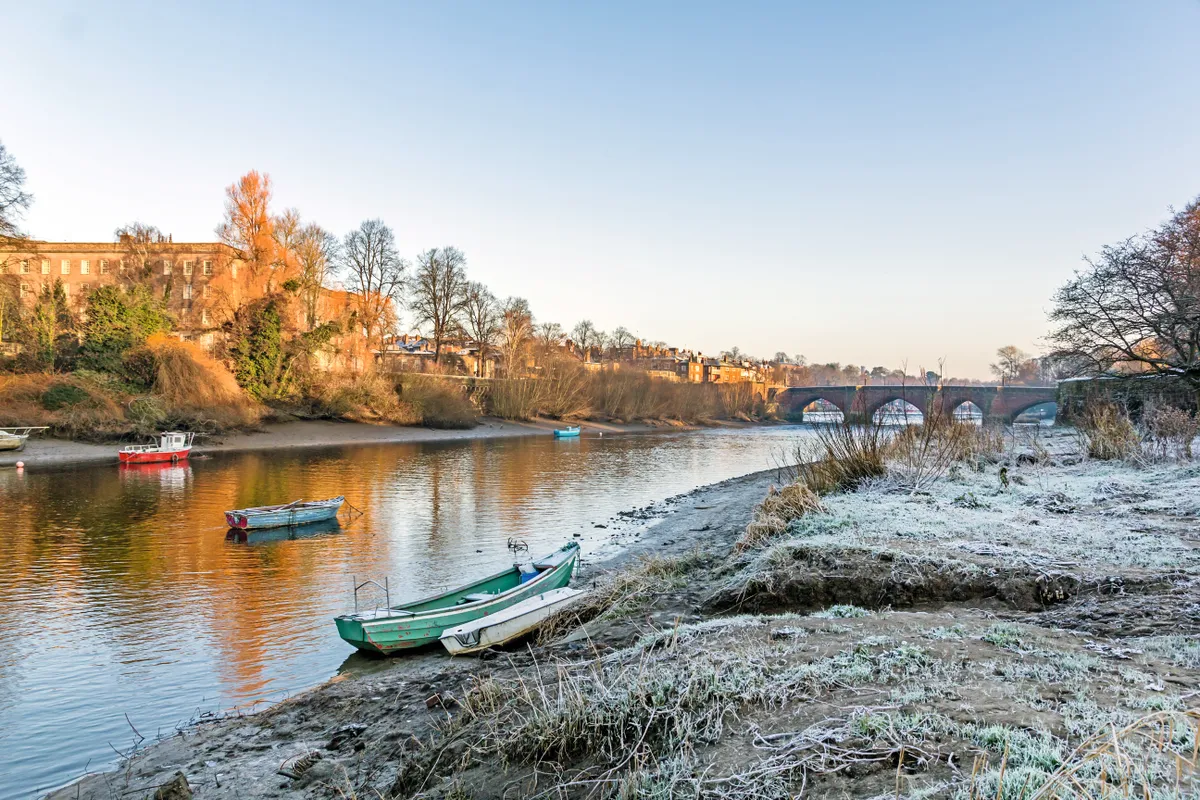
Lymm village, all steep lanes, inns and independent shops, has tranquil walks beside the Bridgewater Canal and up a hidden dingle to the picturesque Lymm Dam lake, sheltered by huge beech trees and the commanding village church. Tiny Styal is one of England’s most remarkable villages, a glorious mix of old farms and thatched cottages side-by-side with an eye-catching planned industrial settlement built to house workers at Quarry Bank Mill, huddled in the Bollin Gorge below. With its woodland walks, Ship Inn and community-run café it’s a half-day well spent – longer if the mill (run by the National Trust) is open.

At the southern end of Cheshire is Audlem, a miniature town clustered around its magnificent church, buttermarket building and strange bear stone, where bear-baiting once entertained. Today it’s a destination for local produce and craft shopping as well as rambles from the bustling canal wharf to the flight of 15 locks raising the Shropshire Union Canal nearly 100 feet.
Cheshire wildlife
At delightful Marbury Country Park near Northwich, bordering Budworth Mere, bitterns overwinter along with many other species. Walks thread to the nearby Trent and Mersey Canal and the remarkable Anderton Boat Lift, with further flashes (lakes) and hides adjoining.
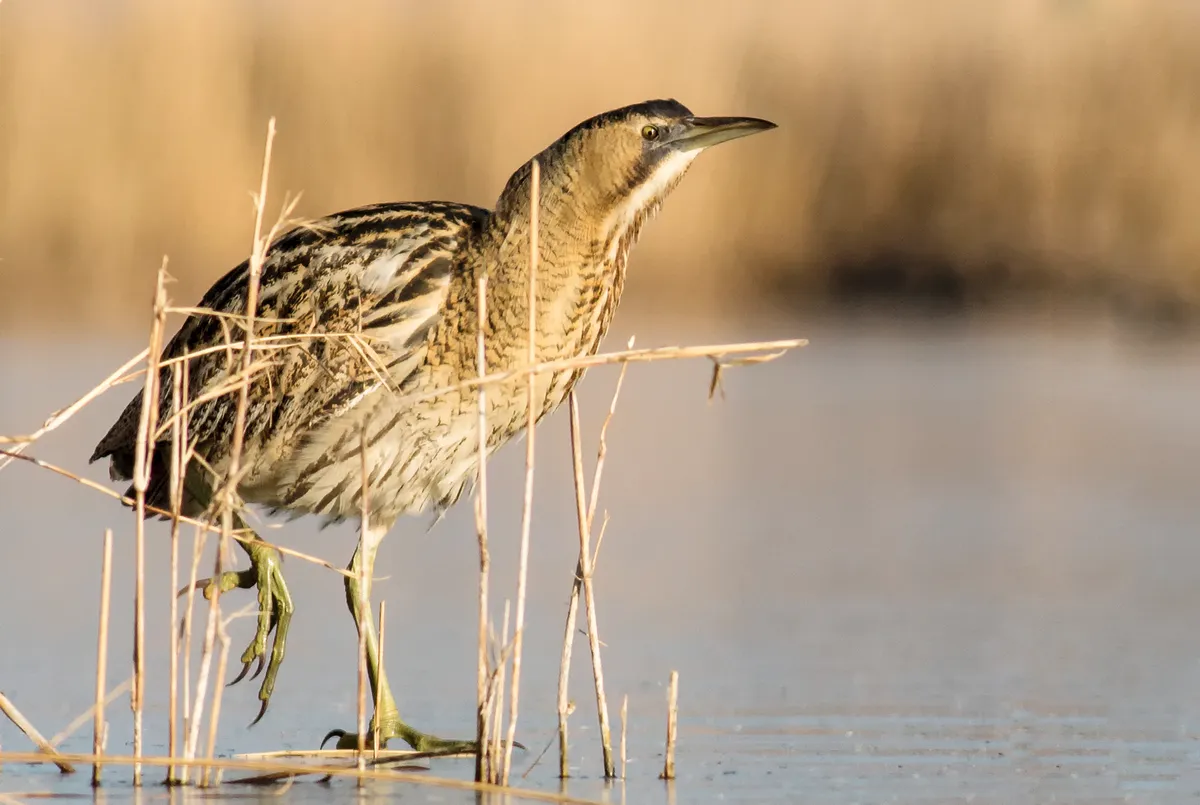
Where to stay in Cheshire
Yew Tree Farm B&B, Utkinton, Tarporley
Restful rooms in a comfy 250-year-old farmhouse on a working arable farm set between Delamere Forest and the Peckforton Hills, with great country views to match. Rates from £40pppn. yewtreefarmbb.com
Ryles Arms, Sutton, Macclesfield
Chic accommodation in a tastefully converted, recently refurbished barn adjoins this excellent 400-year-old rural dining inn. Close to Macclesfield Forest and the Gritstone Trail in glorious, secluded, hilly countryside. B&B rooms from £81. rylesarms.com
Mill Hotel, Chester
Substantial, comfortably converted Georgian canal-side cornmill at the heart of Chester, close to the city walls and cathedral. It has a swimming pool and health spa, plus canal-boat dining. B&B rooms from £85. millhotel.com

Places to eat in Cheshire
Bhurtpore Inn, Aston, Nantwich
Rural free-house with cask ales, local food and fire-warmed traditional atmosphere. Handy for Wrenbury station and the Llangollen Canal. Named after a siege in colonial India. bhurtpore.co.uk
The Tin Hut Coffee Tavern, Pott Shrigley, Macclesfield
Reliable, quirky, corrugated-iron former village reading room, with fulfilling, home-made, winter-busting meals, close to Lyme Park and the Macclesfield Canal. facebook.com/thecoffeetavernpottshrigley
The Poffee, Burwardsley, Chester
An enterprising café which is part of the village post office, shop and store, in sublime countryside by Cheshire’s sandstone spine. Ultra-local fare is to the fore and it has a tucked-away garden. thepoffee.uk
